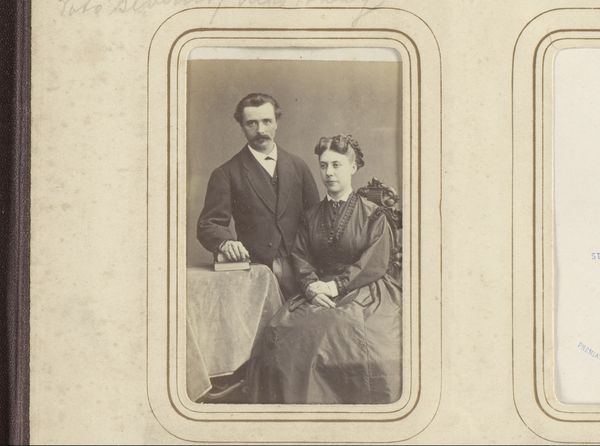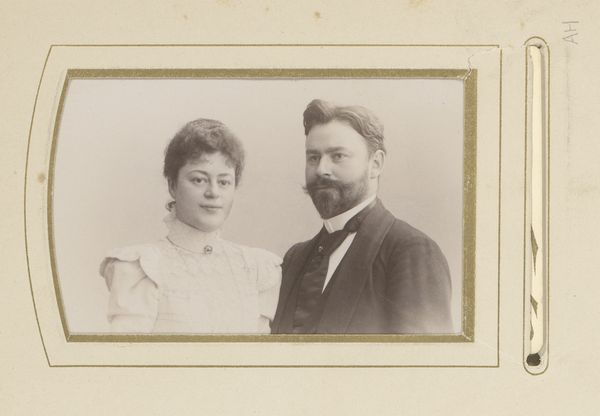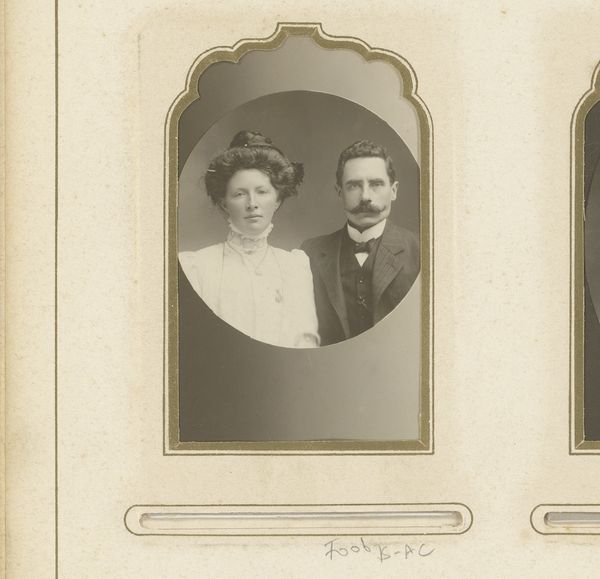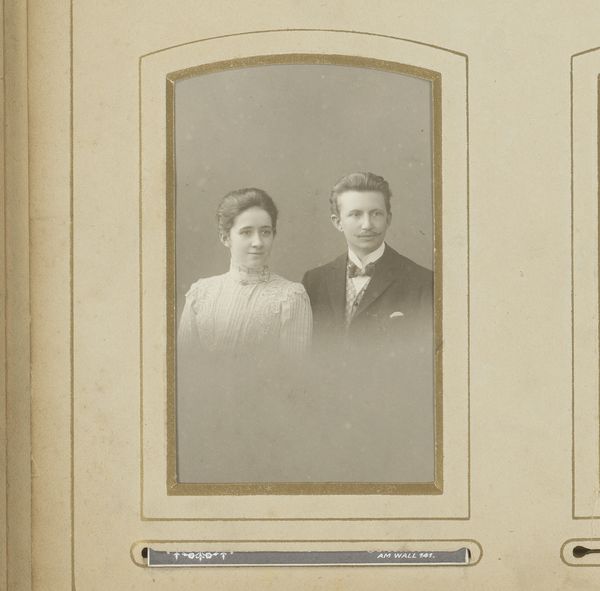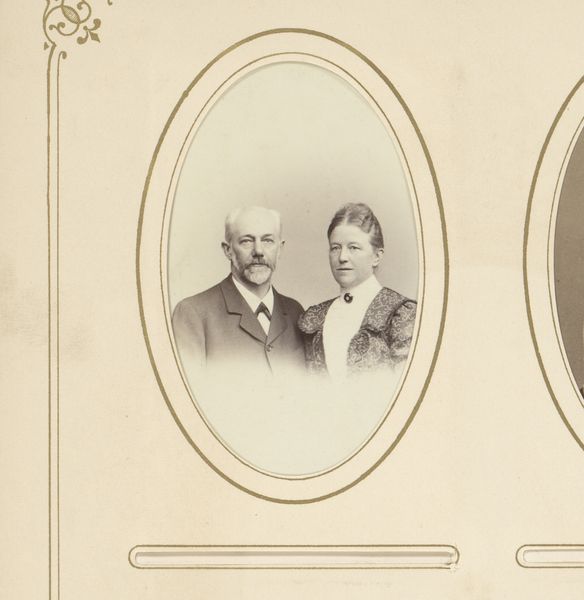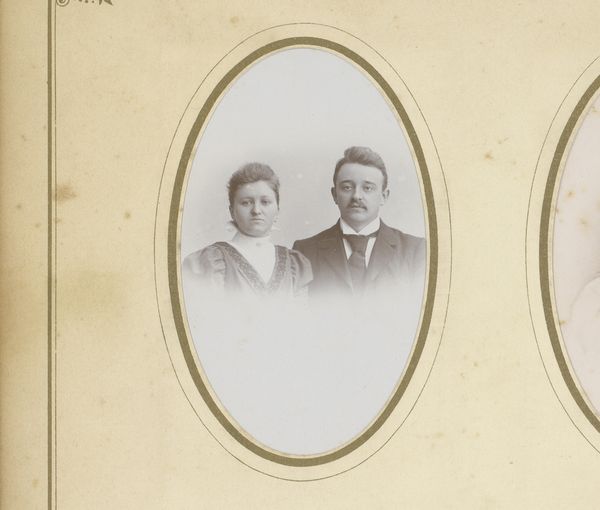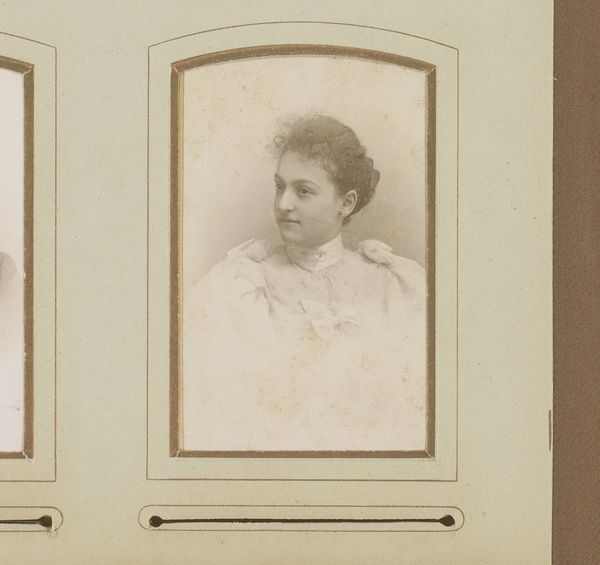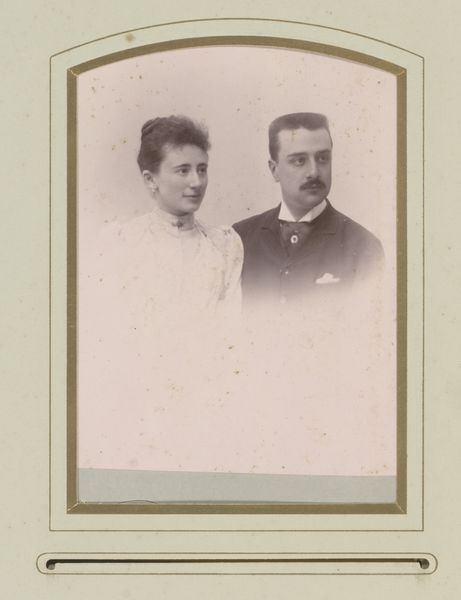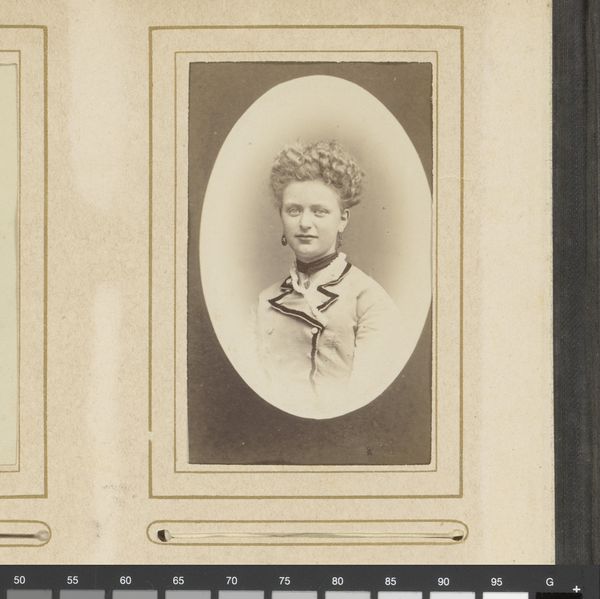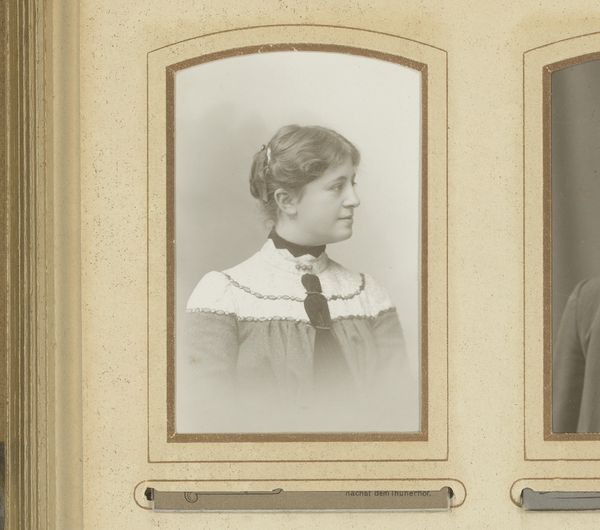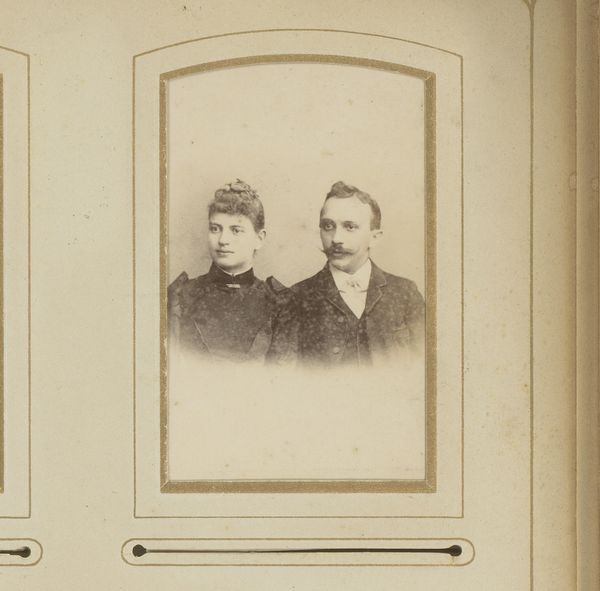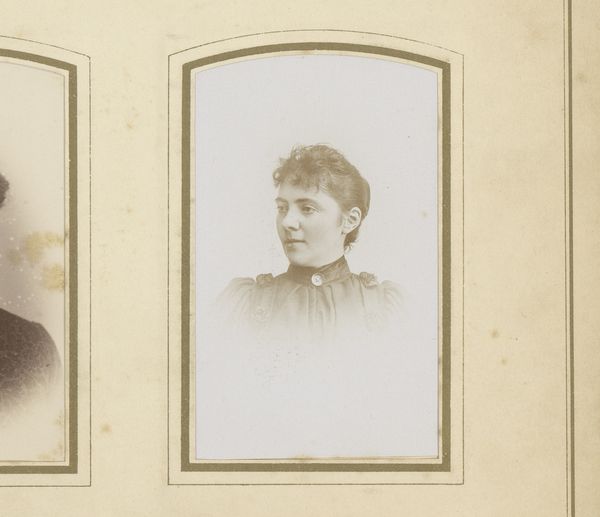
#
aged paper
#
toned paper
#
photo restoration
#
photo element
#
charcoal drawing
#
yellow element
#
warm-toned
#
tonal art
#
watercolor
#
gold element
Dimensions: height 84 mm, width 50 mm
Copyright: Rijks Museum: Open Domain
Curator: Here we have a striking portrait from between 1864 and 1904, titled "Portret van Henri Verluise en Jeanne Verluise-de Contencin" by Eugène Pirou. Editor: It’s sepia-toned, almost dreamlike. The framing too makes me think of a Victorian locket. The image and border colors give it an endearingly antique, hand-wrought feel. Curator: Exactly. Pirou, a noted Parisian photographer, captured many such bourgeois portraits. He offered his clientele the modern technology of photography framed by the aesthetics and pretensions of established portraiture, much to their delight and their status. Editor: But consider the materiality; the image has this incredibly soft focus. The delicate rendering really focuses your attention. Look at the texture in the dress! And is that gold leaf tracing around the picture border? Curator: It’s the trappings of the burgeoning upper middle classes desiring some way to remember themselves and their legacy to their future children, adorning themselves with as much grandeur as possible with a material way to preserve and further solidify themselves in time. Editor: Right. These photo portraits became commodities of self-representation, showcasing status through attire and formal poses. And with this aged paper the work is like holding something from the past; connecting with their aspirations as a culture that craved an idealized version of itself, with all its gilded touches, the desire remains universal, however much the techniques change. Curator: A sentiment expressed to be accessible as these pieces went for sale and production that allowed them to be more approachable by the regular folk. A desire to imitate nobility but using novel methods afforded by advancements of industry. It shows that their status afforded them a different class than most even in photography itself. Editor: Absolutely. These details point not just to bourgeois sensibilities but the craft that defined their values, an important look at their era as the techniques tell us more than we can originally imagine. Curator: It invites a contemplation about image-making and societal representation. Editor: Leaving us pondering on lasting material presence.
Comments
No comments
Be the first to comment and join the conversation on the ultimate creative platform.
